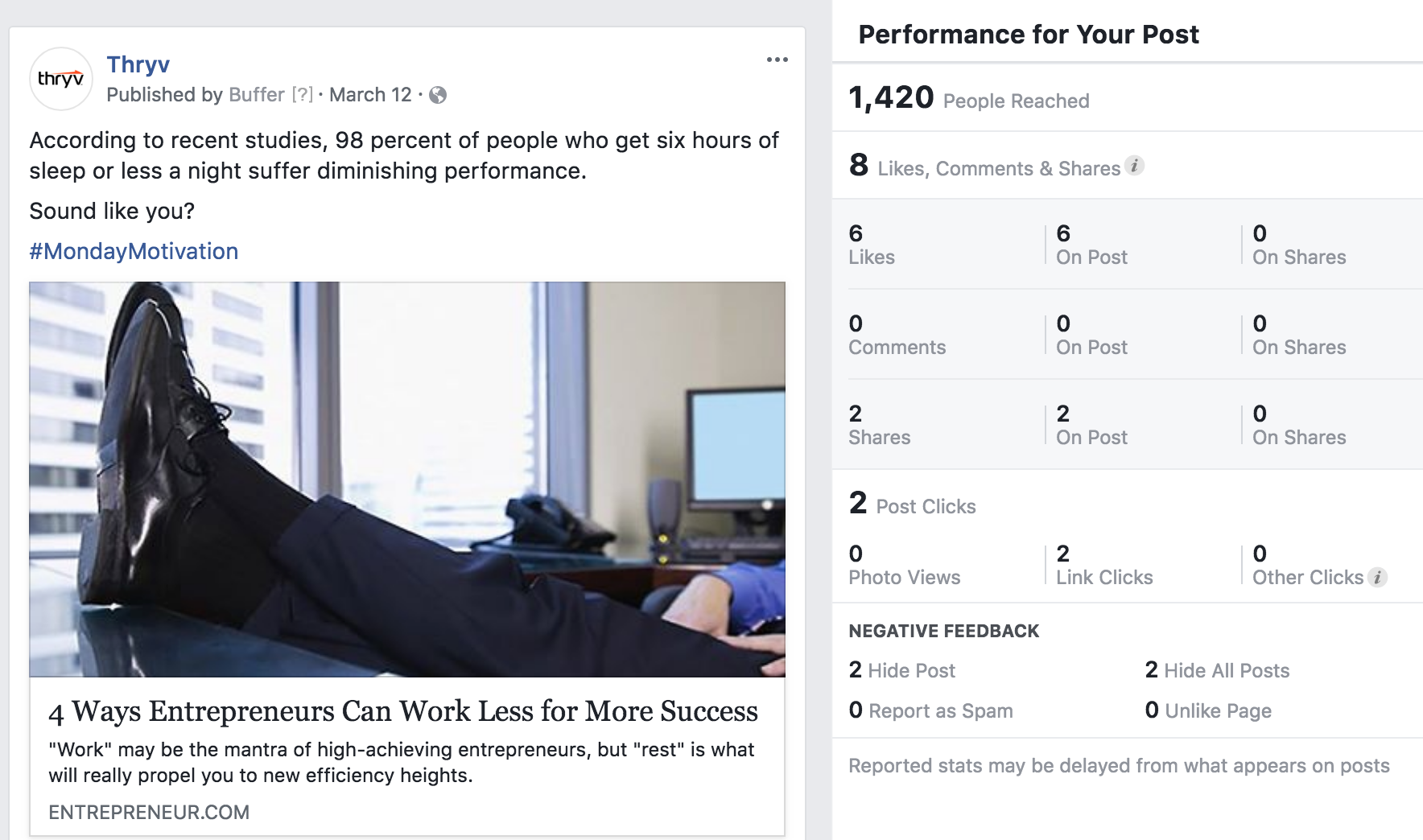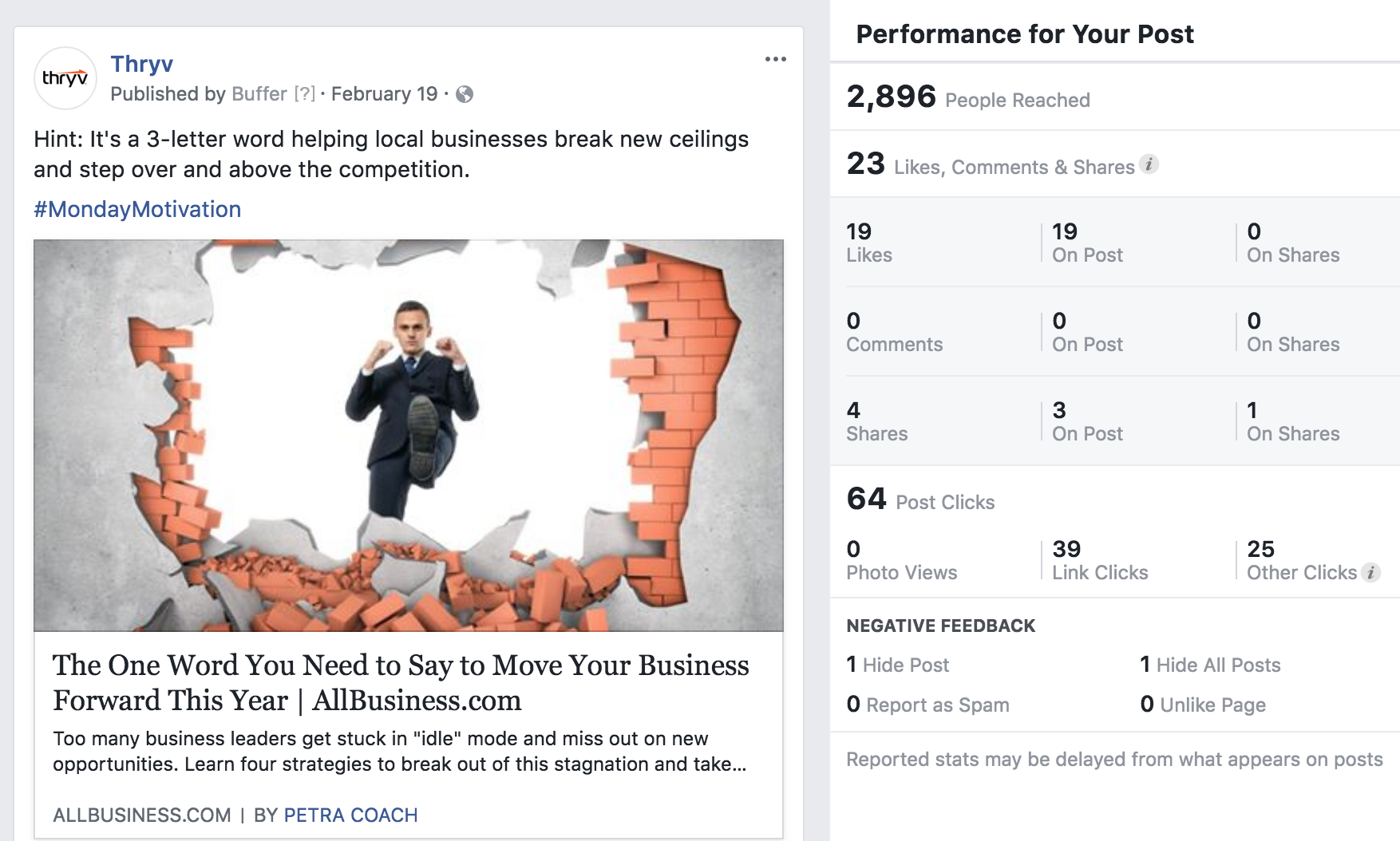Social media, at first glance, seems easy enough. So like most professionals who begin using it for business purposes, I expected I’d pick it up quickly when I joined Thryv’s social media team. It’s just social media, after all. I use it in my personal life all the time. How hard could it really be?
I’m not ashamed to say…Very! It can be very, very hard to navigate what works on various social media channels.
Social media for business is an entirely different animal than social media for, well, social purposes. It’s full of twists and turns, each more unexpected, challenging, and (let’s be honest) frustrating than the last.
Here are the 3 most shocking truths I’ve discovered about social media for business.
1. Is 5 (or 7 or 20) hashtags too many or too little? Both.
Social media sites like Instagram and Twitter rely heavily on things called hashtags to connect individual posts to larger conversations. If you’re like me, you might think your posts are too pretty for the distracting, even heinous, sight of a long list of hashtags. But that sense of pride could seriously weaken your posts’ potential reach.
Optimal hashtag volume varies by platform.
For platforms like Instagram and Google+, hashtags are encouraged. In fact, the more hashtags you use on Instagram, the more engagement you’ll see. (Don’t take that as an invitation to go hashtag-wild—Instagram draws the line at 30.) And if you’re looking to take advantage of the most engagement, you’re best advised to stop at 10.
Google+
Google+ has no set limit for hashtags. However, the general recommendation is 5 hashtags per post. And in case you’re wondering: Why bother with Google+? Isn’t it kind of a social media ghost town? I won’t disagree with you, but Google+ is still Google, and plugging keywords into the world’s biggest search engine can only help your ability to get found online.
Facebook, Twitter and LinkedIn
You may be thinking, “Sure, 30, that’s a lot… but 5? That’s nothing!” and—mathematically— you’re right. But Facebook, Twitter, and LinkedIn have their own sets of hashtag standards.
A good rule of thumb for these sites is 1 to 3 hashtags per post—skew to the low end of this on Facebook and the high end for Twitter. Any more than that, and engagement *que dramatic music* plummets. Hashtags are often seen as a sales ploy, and these don’t play well on friends-and-family-focused Facebook. They work better on Twitter, but because of character limits, too many hashtags can start to look like an #aggressive #sales #pitch. (See what I mean?)
Pro tip: Only use hashtags that relate to your business and the content you’re posting. If you have a post that relates to a trending hashtag, hashtag away! If not, don’t push it. More often than not, a potential customer will be turned off and confused when a post promoting two-for-one jewelry at your boutique shows up in the #traveltuesday feed.
2. Inconsistency is the only constant.
Social media is a fickle environment. So if you’re looking for the constant validation that most casual users strive for, don’t get your hopes up. The same is true for small businesses posting professionally to social.
When content goes stale and engagement is low, a variety of unsuspected evils could be blamed: The “shampoo”—water, rinse, and repeat—method of your content strategy, a busy audience, or maybe new algorithms hard at work. And sometimes, all of the above.
Whatever the reason, staying flexible is key to winning back an audience.
For example, we thought this #MondayMotivation post on efficiency and lack of sleep would resonate with our busy business-owning followers.

Perhaps we have an unusually well-rested group of followers, because they were not enticed to click.
However, here’s another #MondayMotivation post that takes a different angle. Same broad subject (motivation and success), plus same day of the week and same time posted, yet it has 32 times the post clicks!

Maybe the teasing language encouraged clicks or the red of the bricks caught the eye or a slow news day meant more opportunity to be seen. Maybe it was just a more interesting article.
Social media isn’t generous in that it won’t tell you exactly where content goes wrong or right. It’s all about learning from trial and error. With new and, ideally, improved algorithms constantly making organic reach more challenging, you only get a limited window to make the most of a strategy before you’re starting from scratch again.
So, diversify! Try new things like posting an eye-catching photo or video, prompting your audience with quizzes and polls, or engaging in a live stream. (For our part, we’re taking a break from #MondayMotivation posts because they’re too inconsistent.)
Pro tip: Just as social media continuously evolves, your content should too.
3. There’s a very fine line between posting for your followers and at them.
We posted a while back on the biggest dirty word when it comes to social media… (Spoiler alert: It’s “advertising”). But if you’re like most small business owners on social, you may instinctively view social media as an advertising channel as opposed to what it actually is—a social medium for sharing content.
Who could blame you? You’ve got your customers attention, so why not wield it to tell them how great your business is? The problem is if this is all you’re doing, you no longer have their attention.
Think about it. When you’re perusing your News Feed, chances are you’re more interested in that funny cat video than in John Smith’s Tire Shop telling you—for the third time in two days—they have “the best tires in town.” In fact, you may find John’s post irritating.
So if you’re looking to compete with the funny cat videos (and trust me, that’s no small feat), you’re going to have to post more for your followers than at them. This is achieved only by understanding who you’re talking to.
Ask yourself questions like:
- What are my customers likes? Dislikes?
- What might concern them?
- What can I give them advice on?
- Why did they follow me in the first place? (Hint: They want deals. Seriously.)
Put most simply, create content you’d want to read.
Now that doesn’t mean you shouldn’t post about your business. Posts should definitely still relate to you or your industry. For example, John’s Smith’s Tire Shop probably shouldn’t post about sunsets just because you think your customers like them. You should, however, post about the best ways to avoid a tire blowout. (That said, a spectacular flat tire against a spectacular sunset is fair game.) This also gives you enough variety to occasionally mix in a “best in town” promotion. After all, if you’re really the best, people should know about it.
Pro tip: Rather than stating you’re the best, point to articles or customer testimonials giving you those accolades. Social proof will carry more weight than tooting your own horn ever could.
Bonus tip! Tools will do the heavy lifting for you. Really.
Think there’s no way you can keep up with everything listed here? Thryv can do it for you. Thryv works with you to carefully craft a professional and productive social media presence. See for yourself how Thryv can turn your online presence into opportunity.





